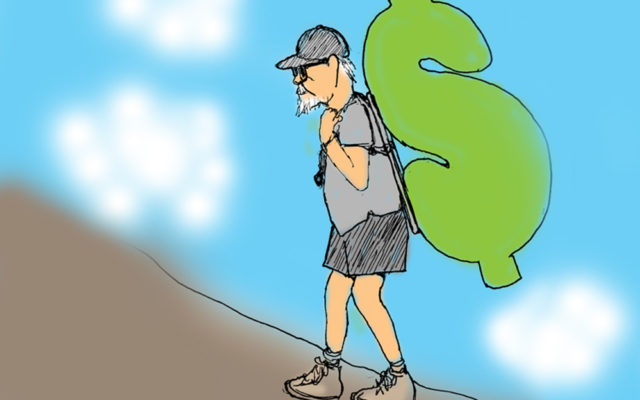
A staycation may be just what you and the Maine tourism industry need during this pandemic
Just a year ago, the BDN ran a pair of OpEds where I sketched three big resilience challenges facing Maine woods tourism: changing climate, changing markets and changing general economic conditions. The second piece highlighted farsighted initiatives by the Maine Woods Consortium and Northern Outdoors, anticipating and adapting to shocks and uncertainties.
Obviously, those columns didn’t foresee the wrenching shocks and uncertainties wrought by the COVID-19 health disaster and economic collapse. In this crisis time, no major economic sector in Maine is more threatened — or more in need of a resilience strategy — than tourism and recreation. Recall that just last year, Maine tourists spent more than $6 billion, supporting more than 100,000 jobs and contributing more than $600 million to state revenues.
The current crisis is set to be far more devastating than the 2007-09 Great Recession, when it took five years for tourist numbers, visitor spending and employment to return to pre-recession levels. Now, a decade of steady post-recession growth has gone up in smoke.
After nearly two months of “lockdown,” the state is carefully beginning to relax restrictions on recreational activities, beginning in 12 rural Maine counties. The first phase of reopening includes state parks, eating places, retail outlets, golf courses, campgrounds and sporting camps — under strict guidelines. We can hope that, with continued success of the state’s measures to prevent COVID-19’s spread, it will be possible by Memorial Day, or at least July 4, to relax conditions further. It may be possible to open more leisure and hospitality activities — such as lodgings, fairs and festivals — and, importantly, to end the quarantine requirement for out-of-state visitors.
By chance, this most extreme economic shutdown has coincided with “mud season” — rural tourism’s traditional downtime. And temporary federal supports are helping some leisure and hospitality businesses stay afloat. But reviving rural tourism and returning it to a semblance of normality will take a multi-pronged strategy and probably require several years. It seems certain that a broad array of business counseling, financial support, product development, employee training and marketing initiatives will be required.
In the very near term — for the coming summer tourism season — we should revive a marketing idea from the last recovery period: the “Staycation.” A decade ago, staycations were a core promotional pitch of the Maine Office of Tourism and the Maine Tourism Association. They appealed to Mainers’ self-interest, with a touch of Maine loyalty mixed in.
The name pretty well describes a staycation: In 2020, Mainers fortunate enough to have good health and secure incomes should make a special effort to explore rural Maine’s many attractions — natural, cultural, adventure and culinary. And spend!
This is a win-win proposition: enjoyment for travelers and crucial survival revenues for the thousands of small businesses and host communities that make up rural Maine’s leisure and hospitality infrastructure. This is no hardship and, besides, it’s a lot less expensive than a vacation trip to the Grand Canyon or Paris.
Maine bicentennial activities may still be held in many communities later this year and can be a fun attraction — with safe distancing, of course. All the raw material needed for planning a summer of inspiration and enjoyment in rural Maine can be found at visitmaine.gov .
David Vail is the Adams Catlin Professor of Economics emeritus at Bowdoin College in Brunswick and a consultant to the Appalachian Mountain Club.